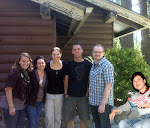
So one of the things that I participated in while in Malawi was something called "Farming God's way." I learned alot about this farming method while I was in Malawi, and spent about four days supporting the amazing people who have already been teaching this to the people of Malawi for years. They do an amazing job of demonstrating this method, as well as tying in how we need to rely on God for our spiritual food as well as physical food. There are alot of resources online where you can learn about this in depth (http://www.farming-gods-way.org/FGW.htm), but I will attempt to give a brief overview.
This was taken from the site I listed above:
"Farming God’s Way has a proven track record of 28 years & was initially designed by Brian Oldreive of Zimbabwe, on the commercial farm Hinton Estate (3,500ha). The farm was ultimately the second largest commercial farm in Zimbabwe. The technology was thereafter made available to surrounding predominantly subsistence farmers, & many success stories abound where farmers have adhered to standards, & lives across the continent have been drastically improved with results of radically improved yields, provision, profitability & restoration of farmers self worth."
The main staple crop grown in Malawi is corn, or "Maize." Most people who farm are sustenance farmers, which means they farm purely to be able to eat and feed their families. This really shows the importance of agriculture, and any way to be able to grow more food and prevent starvation is huge. The goal is to show people a better way to farm, prove that it works, and hope that they will break away from the traditional way of farming and take a risk with something new. Sometimes this can be hard, especially when you are used to something that you know will produce some food, even if its not enough. Risking your food source on something totally foreign to you can be a challenge. This is why there is usually a sample garden planted on a small plot of land owned by a local church. People can see for themselves how this way of farming works without having to take any risks. The goal from there is to have people try it on a small part of their own land, and eventually on their whole property once they see its benefits.
Four principles:
-Do everything on time (According to the optimal season and rainfall)
-Do everything to a high standard (Measuring out the field and planting stations)
-Don't waste anything (leave dead plants on the ground instead of burning them)
-Do your work with joy (God gave us farming as a blessing, not a curse. Adam was told to work the garden of Eden and take care of it, this happened before the fall.)
When you look at the forests and the places where there is no need to work or tend the plants you can see that the dead plants have fallen to the ground, sometimes covering it. There is no one there to clean up, yet the plants grow just fine. Apparently having this dead plant layer helps protect against soil erosion, and gives nutrients back to the ground.
The traditional way of farming requires:
-Tilling the ground and making ridges, which is very labor intensive.
-Gathering and burning the old plants
Farming God's way has been shown to require much less labor, making it more time efficient. It also has been proven to grow healthier, larger quantities of plants. Thanks to Cathey, Mcnell, Wonderful, and the rest of the FTS guys, you are amazing.
Here are a few pictures of what I was involved in:






0 comments:
Post a Comment